- Joined
- 27 December 2005
- Messages
- 17,743
- Reaction score
- 26,335
Sandy Hook / Model 246 - looks like the low RCS demonstrator bottom left.
View: https://www.flickr.com/photos/sdasmarchives/34435423066/
PINE RIDGE
While work was still in progress on low-altitude, short-range reconnaissance systems like AQUILINE and AXILLARY, CIA scientists and engineers were also working on a high-altitude recoverable unmanned reconnaissance vehicle with an extremely-low-radar cross section that would enable it to fly undetected· over hostile territory. During !he 1960s !here had been a study conducted by 1he Teledyne Ryan Aeronautical Company of San Diego on !he construc1ion of an undetectable drone known as SANDY HOOK. This 44-fool long drone would operate at 120,000 feet at Mach 0.9. with a range of 5,000 nautical miles. Its radar cross section would be 0.01 square meters. Project SANDY HOOK never advanced very far in development; projected high costs and substantial technical risks led to its cancellation in December 1969.
Some of the concepts in SANDY HOOK were carried over into a new project known as PINE RIDGE, which was a proposal for an unmanned reconnaissance vehicle. with an even lower radar cross section (0.001 square meter). Research on SANDY HOOK had indicated that a radar cross section this low was attainable and would prevent detection and !racking by existing radar defense systems. The PINE RIDGE proposal called for a delta-shaped vehicle, approximately 17 feet long with a 21-fool wingspan. Two vertical stabilizers would give the vehicle an overall height of three to four feet. An existing Teledyne J-100-CA-100 Turbojet engine could have been used to power !he vehicle. at Mach 0.9 at the operating altitude of 65,000 to 75,000 feet. Range was estimated at 3.300 nautical miles.
Despite interest within !he CIA and !he Air Force for an undetectable reconnaissance vehicle, PINE RIDGE was never funded. In January 197l high-level representatives from DOD and C!A rejected a proposal for a feasibility study to be conducted by Ryan Aircraft.
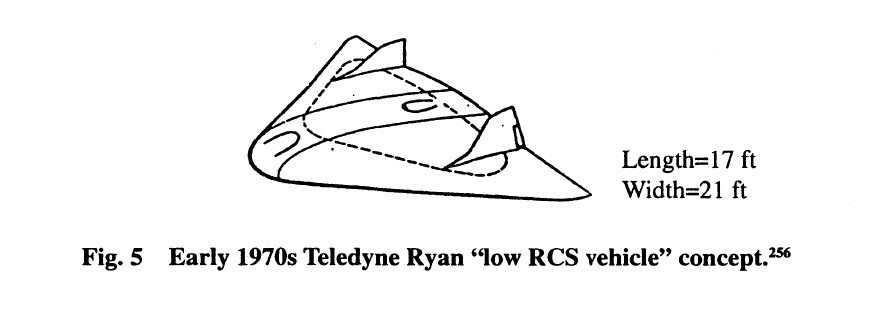
Eberhard, "Air Force UAVS: The Secret History"The second was a 125,000-foot altitude, intercontinental,
subsonic drone with hydrogen engines and very stealthy
delta wing design built by Teledyne Ryan Aeronautical in
the early 1970s. It was to be completely invisible to radar at
that altitude because it had a radar cross-section of a dime.
The proposed $400 million program, called Sandy Hook,
never made it to flight test. The development costs for
both UAVs probably never exceeded $30 million. Robert
R. Schwanhausser, Ryan’s Sandy Hook program manager,
interview, July 7, 1999.
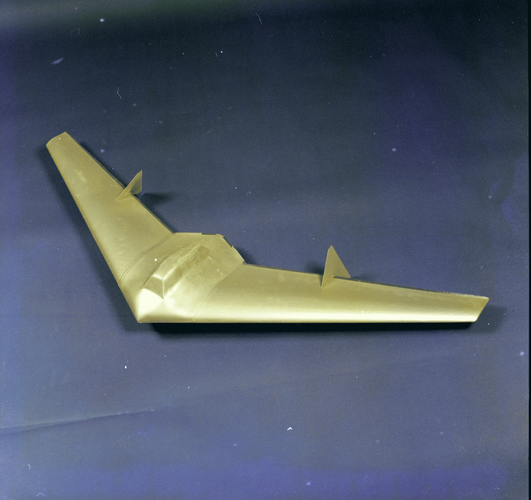
No, it's from Ryan. What it is - model or project number - is not known.My dear PaulMM,
if that was not from Ryan,what was it ?.
"AXUMITE" , given the naming convention and time period I suspect this was a small RPV program.
Only reference to COMPASS HAT is 'AFRDR - 14 Sep 1973 - Special Access Program".

Administrative Practices
www.google.co.nz
Most COMPASS projects are avionics related but there are drone projects like COMPASS ARROW (Ryan AQM-91 Firefly), COMPASS COPE, etc. COMPASS was assigned to USAF Headquarters (AFRDR) - AFRDR stands for Air Force Director of Reconnaissance and Electronic Warfare.
SANDY was assigned to USAF AU (Air University) which is a bit odd?
PINE doesn't seem to be an Air Force assigned code.
MITRE is https://en.wikipedia.org/wiki/Mitre_Corporation
OSA - Office of Special Activities
"AXUMITE" , given the naming convention and time period I suspect this was a small RPV program.
In "National Reconnaissance Program crisis photography concepts, part 2: PINTO" , https://www.thespacereview.com/article/4526/1 , the author mentions AXUMITE as an F-4 launched satellite system, with hints that a subsequent article may cover it.
The AXUMITE concept is based on the development of a small, very quick recation photo satellite system launched from an F-4 aircraft based in the Pacific. A typical mission would consist of launch within two hours of decision, one time coverage of the selected target area and Atlantic or Pacific reentry vehicl recovery. The booster would be based on the SKYBOLT solid rocket with Scount solid strap-ons. The camera would be a 32-inch focal length scaled up version of the CORONA camera yielding three-foot resolution at 75 nautical mile altitude. The reentry vehicle would be a scaled down version of the MARK V RV.
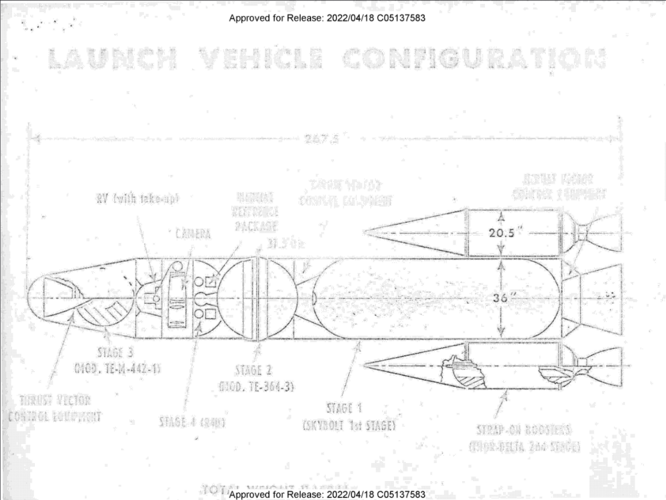
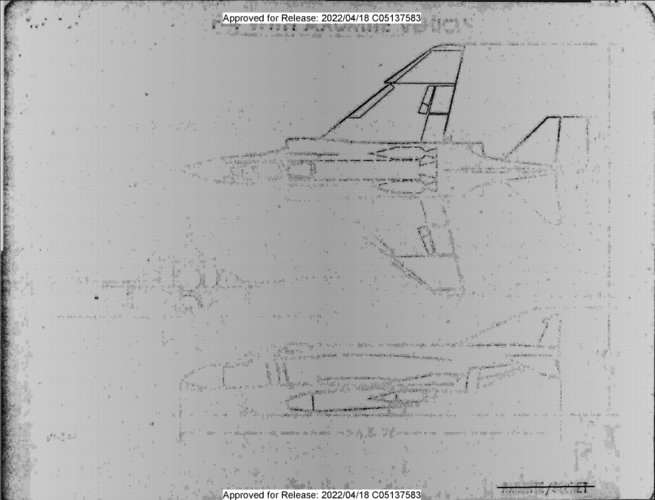
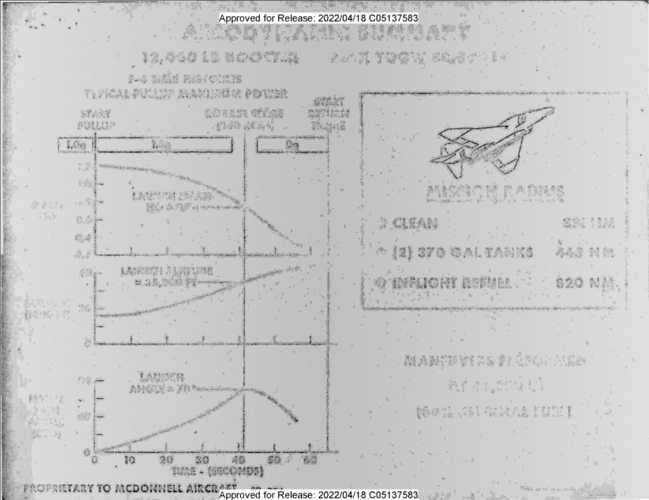
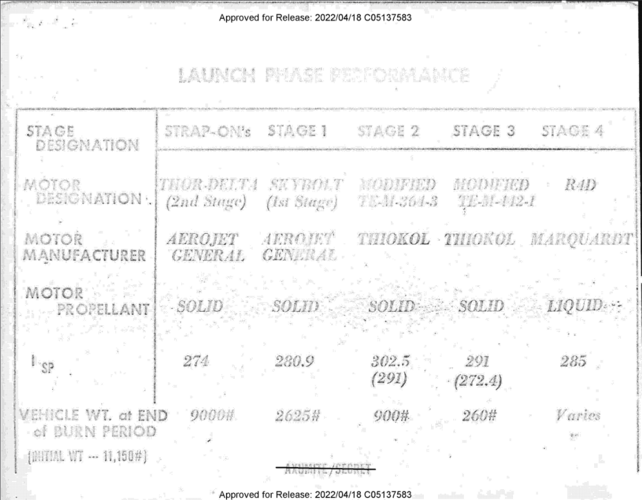
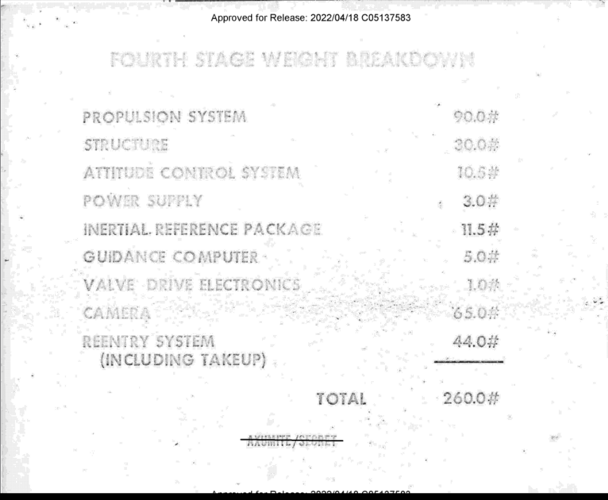
3) Sandy Hook, Pine Ridge and the low-RCS demonstrator seem to be more closely linked program and designwise.
PINE RIDGE
Dr. McLucas continued that two years ago there was a drone program called SANDY HOOK. It had a 30-foot wing span, flew at 120,000 feet, and had interesting characteristics among which was that it cost $500M to develop. Thus the ExCom decided not to proceed. Air Force funding was terminated. As a consequence the contractor, Ryan Aeronautical Corporation, approached the CIA for a continuation. The present thinking is to build a one-third scale version producing a radar cross-section one-tenth that of SANDY HOOK flying it lower with a developed engine and bringing the total cost down to one-tenth.
Dr. McLucas said he had considered spending $250K to $500K to find out if it were possible to build a .001 square meter cross-section drone complete with camera window.
Oh, how I hope this was actually used!"AXUMITE" , given the naming convention and time period I suspect this was a small RPV program.
In "National Reconnaissance Program crisis photography concepts, part 2: PINTO" , https://www.thespacereview.com/article/4526/1 , the author mentions AXUMITE as an F-4 launched satellite system, with hints that a subsequent article may cover it.
Holy Bayer-matrix dithering Batman ! (edit: note to moderators: please move to new/other topic as appropriate)
The AXUMITE concept is based on the development of a small, very quick recation photo satellite system launched from an F-4 aircraft based in the Pacific. A typical mission would consist of launch within two hours of decision, one time coverage of the selected target area and Atlantic or Pacific reentry vehicl recovery. The booster would be based on the SKYBOLT solid rocket with Scount solid strap-ons. The camera would be a 32-inch focal length scaled up version of the CORONA camera yielding three-foot resolution at 75 nautical mile altitude. The reentry vehicle would be a scaled down version of the MARK V RV.
View attachment 701405
View attachment 701407
View attachment 701408
View attachment 701409
View attachment 701411
F-2022-00030_C05137583 AXUMITE BRIEFING SUMMARY
Oh, how I hope this was actually used!
That's one heck of a useful capability.
from thisThe AXUMITE concept was not the subject of a funded study. It is similar in many respects to FASTBACK but has even more stringent payload weight constraint in the F-4 launched version. Being a one-day system like FASTBACK, AXUMITE could not provide sustained daily coverage of a crisis area. Atlantic recovery is not practical for the same reasons. Further reason for eliminating AXUMITE from further consideration is that the concept has not been developed sufficiently to warrant confidence in the cost and performance estimates.
Bugger.Oh, how I hope this was actually used!
That's one heck of a useful capability.
Unfortunately just another interesting paper exercise:
from thisThe AXUMITE concept was not the subject of a funded study. It is similar in many respects to FASTBACK but has even more stringent payload weight constraint in the F-4 launched version. Being a one-day system like FASTBACK, AXUMITE could not provide sustained daily coverage of a crisis area. Atlantic recovery is not practical for the same reasons. Further reason for eliminating AXUMITE from further consideration is that the concept has not been developed sufficiently to warrant confidence in the cost and performance estimates.
PINE RIDGE
Dr. McLucas continued that two years ago there was a drone program called SANDY HOOK. It had a 30-foot wing span, flew at 120,000 feet, and had interesting characteristics among which was that it cost $500M to develop. Thus the ExCom decided not to proceed. Air Force funding was terminated. As a consequence the contractor, Ryan Aeronautical Corporation, approached the CIA for a continuation. The present thinking is to build a one-third scale version producing a radar cross-section one-tenth that of SANDY HOOK flying it lower with a developed engine and bringing the total cost down to one-tenth.
Dr. McLucas said he had considered spending $250K to $500K to find out if it were possible to build a .001 square meter cross-section drone complete with camera window.
3) Sandy Hook, Pine Ridge and the low-RCS demonstrator seem to be more closely linked program and designwise.
Taken from minutes of NRP Executive committee meeting Jan. 29th, 1971:
PINE RIDGE
Dr. McLucas continued that two years ago there was a drone program called SANDY HOOK. It had a 30-foot wing span, flew at 120,000 feet, and had interesting characteristics among which was that it cost $500M to develop. Thus the ExCom decided not to proceed. Air Force funding was terminated. As a consequence the contractor, Ryan Aeronautical Corporation, approached the CIA for a continuation. The present thinking is to build a one-third scale version producing a radar cross-section one-tenth that of SANDY HOOK flying it lower with a developed engine and bringing the total cost down to one-tenth.
Dr. McLucas said he had considered spending $250K to $500K to find out if it were possible to build a .001 square meter cross-section drone complete with camera window.
30 ft wing span seems wrong for SANDY HOOK - combined with previously known length of 44ft - means it is less flying wing and more flying body.... though this does aid my argument that this (top left) is SANDY HOOK - it appears to have longer fuselage than wingspan.
If PINE RIDGE was a 1/3rd geometric scale version of SANDY HOOK it would have been very small indeed (10ft span). PINE RIDGE is described as 17ft length, 21 ft span elsewhere.
There's a reference later on in this document to giving PINE RIDGE over to the air force.
Notably, SANDY HOOK was to use slurry hydrogen as fuel.
As for SANDY HOOK, on which only a few million dollars have so far been spent, it was agreed that this was an interesting program from the technology standpoint and that we should go ahead with the $10 million programmed in 1970 but should hold off on systems start. There are various questions related to materials for the drone, the engine and radar absorption materials which can be answered by a continuing technology program; also, the usefulness of slurry hydrogen as aircraft fuel appears interesting for further exploration.
And in both cases, a few dozens drones, insanely expensive and most advanced ever, ended at an aircraft boneyard... or scrapped.
Mr. Packard said tha.t he was not sure we can obtain per- mission from the 40 Committee to operate the drone over denied territory. A good example is the TAGBOARD program. Mr. Helms said that he was not enthusiastic about· PINE RIDGE, not only was there a policy question of its ~se but he would question what it could be used against. Mr. Packard said that it was not a question of radar cross-section, it was a question of reliability. After all, the drone might come down in Peking. Dr. McLucas noted that such circumstances had a finite probability--an Army general flew into Russia recently in a manned aircraft.
No way can a hydrogen powered aircraft fly that high or that far with that claimed size. Hydrogen energy density sucks. I'm talking 14 liters per kilogram of liquid hydrogen, and a quick google says that slush is only 20% denser, for a density of about 11.667 liters per kg. JP7 is about 0.66 liters per kg. Oh, and slush hydrogen needs to be kept at 13.8K, which means even more volume taken up by insulation.PINE RIDGE
Dr. McLucas continued that two years ago there was a drone program called SANDY HOOK. It had a 30-foot wing span, flew at 120,000 feet, and had interesting characteristics among which was that it cost $500M to develop. Thus the ExCom decided not to proceed. Air Force funding was terminated. As a consequence the contractor, Ryan Aeronautical Corporation, approached the CIA for a continuation. The present thinking is to build a one-third scale version producing a radar cross-section one-tenth that of SANDY HOOK flying it lower with a developed engine and bringing the total cost down to one-tenth.
Dr. McLucas said he had considered spending $250K to $500K to find out if it were possible to build a .001 square meter cross-section drone complete with camera window.
Notably, SANDY HOOK was to use slurry hydrogen as fuel.
No way can a hydrogen powered aircraft fly that high or that far with that claimed size. Hydrogen energy density sucks. I'm talking 14 liters per kilogram of liquid hydrogen, and a quick google says that slush is only 20% denser, for a density of about 11.667 liters per kg. JP7 is about 0.66 liters per kg. Oh, and slush hydrogen needs to be kept at 13.8K, which means even more volume taken up by insulation.
Yes, 30 ft wingspan seems like a typo.It was a big boy
Okay, so it's ammonia-hydrogen slurry, which now only takes up 7 liters per kg. JP7/kerosene still only takes up 0.66 liters per kg.No way can a hydrogen powered aircraft fly that high or that far with that claimed size. Hydrogen energy density sucks. I'm talking 14 liters per kilogram of liquid hydrogen, and a quick google says that slush is only 20% denser, for a density of about 11.667 liters per kg. JP7 is about 0.66 liters per kg. Oh, and slush hydrogen needs to be kept at 13.8K, which means even more volume taken up by insulation.
There is slush hydrogen, and there is slurry hydrogen. Slurry hydrogen has 1.5-2.0 times the energy density of liquid hydrogen. In the referenced document they *say* "slurry", but could mean either. I have not been able to determine the state of the art in slurry hydrogen during the relevant time period but I think it likely this was referring to an ammonia hydrogen slurry.
Source:RYAN LOW RCS VEHICLE (1973-4 DESIGN STUDY)
The Remotely Piloted Vehicle (RPV) Special Projects Office at Wright-Patterson Air Force Base, Ohio, conducted studies in conjunction with Teledyne Ryan and other companies, of low RCS drones. The Ryan Low RCS Vehicle was to consist of a small metal centerbody surrounded by a large amount of lossy dialectric material. The configuration was all-wing, with a simple delta planform and inward-canted twin vertical tails. The engine and equipment were buried in the fairly thick wing root. Tail surfaces and other features were to be made of "radar- transparent" materials (ref. 23). Although impressive RCS results were achieved in model tests, the approach was impractical and the vehicle still did not meet RCS goals at all frequencies of interest (ref. 19). The goals had been derived from extensive threat analyses, and covered a broad range of frequencies corresponding to the various elements of the latest Soviet air defense systens
References
19. Twigg, John K., Colonel, USAF (Ret), Interview with David C. Aronstein, 24 April 1996.
23. Wintersdorf, R.W., "RPV - Drone Applications," in Proceedings of the 1975 Radar Camouflage Symposium. Air Force Avionics Laboratory Technical Report AFAL- TR-75-100
URL?Not sure if this should go here or the 262 thread (or neither!) :
View attachment 701665
Compare with the patent sketch in first post. It was from LaRC image library
aside from materials, does seem to match the description you posted of the Ryan stealth drone. And metal models were preferred at the time for wind tunnel tests, so it certainly could be a wind tunnel model of the Ryan drone.URL?Not sure if this should go here or the 262 thread (or neither!) :
View attachment 701665
Compare with the patent sketch in first post. It was from LaRC image library
Given the date in the filename and how generic the shape is, not sure if its related.
